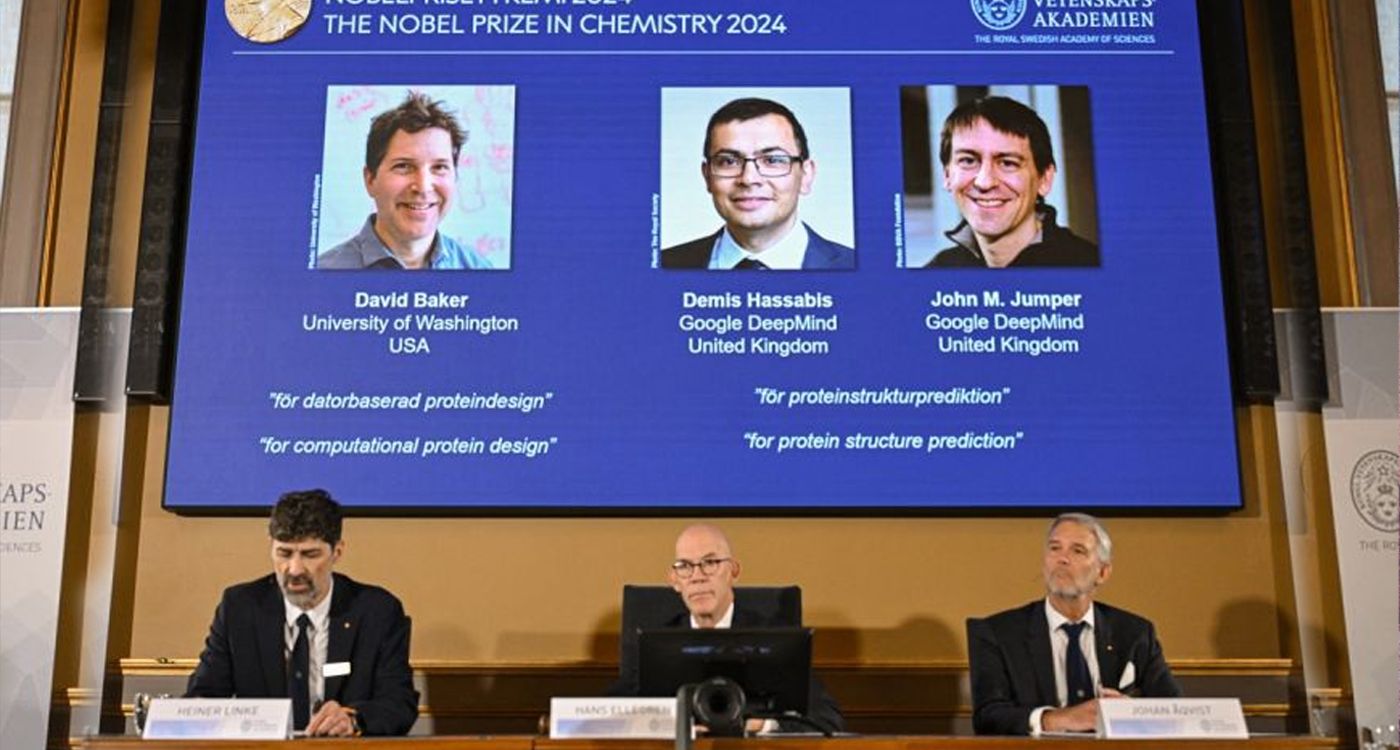
The 2024 Nobel Prize in Chemistry was awarded on October 9 to David Baker, John Jumper and Demis Hassabis for their contributions to the design and prediction of protein structures, key advancements for biotechnology.
On October 9, the Royal Swedish Academy of Sciences honored Americans David Baker and John Jumper, alongside Briton Demis Hassabis, for their exceptional contributions in the field of proteins. According to the Academy's statement, Baker received half of the prize for his method of "computational protein design," which involves using computer assistance to create new proteins. Meanwhile, Hassabis and Jumper shared the other half of the prize for their groundbreaking work on "predicting protein structures" through artificial intelligence. So, what does this entail?
Key players
The recipients of the 2024 Nobel Prize in Physiology or Medicine, Victor Ambros and Gary Ruvkun, explored the mysteries of RNA, particularly microRNAs, and their fundamental role in regulating gene expression. In contrast, the new Nobel laureates in Chemistry focused on another biochemical element: proteins. Essential components of life, proteins play both structural and functional roles in the body, serving as building blocks of tissues, hormones, antibodies and catalysts in biochemical reactions. Due to their complex structures, they are involved in all biological processes, ensuring cellular communication, molecular transport and regulation of bodily functions. Their diversity and specificity make them key players in the functioning of living organisms.
Complex process
Protein synthesis is a complex process that occurs within the cell. It begins with the transcription of DNA, found in chromosomes, into messenger RNA (mRNA). Once synthesized, mRNA is transported out of the cell nucleus to bind with a ribosome, often referred to as the protein factory. The ribosome then catalyzes the translation process, during which the information coded in mRNA is used to assemble a sequence of amino acids, leading to the formation of a protein. However, this is just the beginning of the process. After translation, proteins undergo post-translational modifications, which are crucial for determining their function, stability, and localization within the cell. These steps are also vital for the protein to acquire a specific three-dimensional conformation, essential for its proper functioning.
Novel proteins
Over the years, Baker mastered the fundamental principles of this process, enabling him to design proteins that did not previously exist. In a study published in November 2003 in the journal Science, he noted that there is a considerable, albeit finite, number of protein configurations observed in nature. However, it remains uncertain whether unobserved structures are physically unrealizable, or simply not sampled by evolutionary processes or characterized by structural biologists. "Methods for de novo design of novel protein structures provide a route to resolving this question and, perhaps more importantly, a possible route to novel protein machines and therapeutics," the author stated.
Computational protein design employs algorithms and computer simulations to predict and model the structure and function of proteins. This approach, developed by Baker and his team, has allowed for the creation of custom-designed proteins with specific properties, fostering innovation in various fields of health and technology. "David Baker has succeeded with the almost impossible feat of building entirely new kinds of proteins," the Nobel committee stated, highlighting that these proteins can be used as drugs, vaccines, nanomaterials and miniature sensors.
Artificial intelligence
On the other hand, the work of Demis Hassabis and John Jumper with their artificial intelligence model, AlphaFold, represents a significant breakthrough in predicting protein structures. For decades, the scientific community has tirelessly attempted to determine a protein's structure from its amino acid sequence, a challenge that proved insurmountable. "The explosion in available genomic sequencing techniques and data has revolutionized bioinformatics but the intrinsic challenge of experimental structure determination has prevented a similar expansion in our structural knowledge," the new Nobel laureates explained in a study published in July 2021 in Nature, which has been cited over 27,196 times to date.
By developing an accurate algorithm for predicting protein structures, paired with extensive databases of organized structures and sequences, the researchers aimed to accelerate the growth of structural bioinformatics to keep pace with the genomic revolution. In 2020, AlphaFold completely revolutionized this paradigm. "We hope that AlphaFold – and computational approaches that apply its techniques for other biophysical problems – will become essential tools of modern biology," they concluded. According to the Nobel committee, this discovery will enable researchers to better understand antibiotic resistance and create images of enzymes that can decompose plastic, among a multitude of scientific applications.




Comments